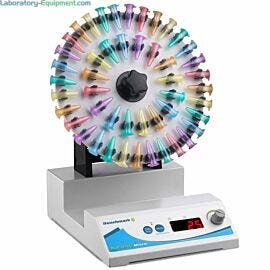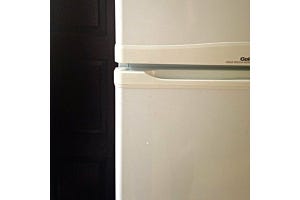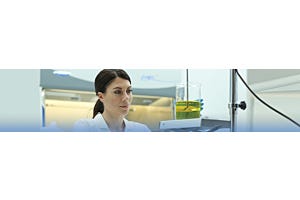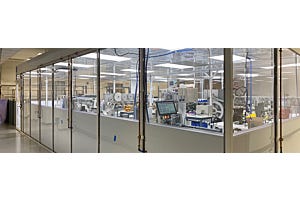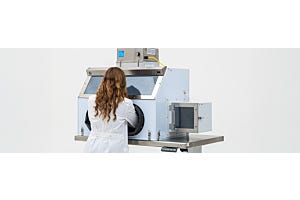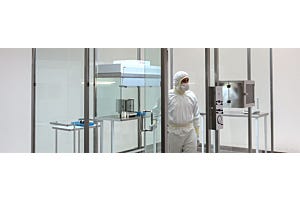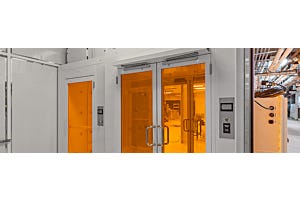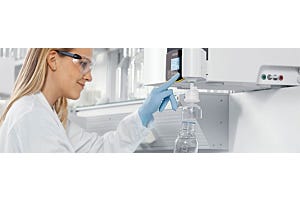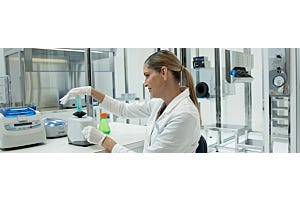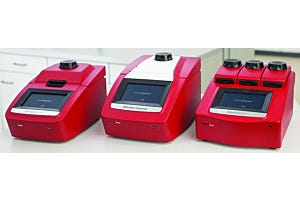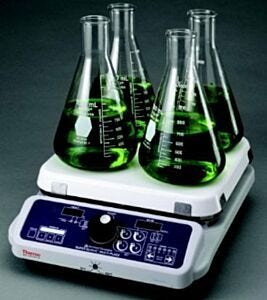
What is a Laboratory Hot Plate?
Laboratory hot plates consist of a heating element installed underneath a plate surface, manufactured from conductive steel or plastic, connected to a digital or analog controller.
What is a Laboratory Hot Plate Used For?
Ubiquitous in clinical, production and research labs, hot plates are used to slowly and safely heat samples, reagents and chemicals without the dangers associated with the open flame of a Bunsen burner.
Stirring Hot Plate Styles, Components, and Types
Stirrer hot plates are equipped with an overhead or magnetic stirring apparatus to mix the sample during the heating process, ensuring more complete temperature uniformity. For operator protection, hot plates include several safeguards, including over-temperature prevention, audible and visual alarms, and non-sparking components for flammable or explosive samples.
A - Heater Stirrer Plate Design
(back to chart)
A1 - Hot Plate
Standard temperature control hot plates do not include a stirring apparatus for sample mixing during the heating process. More economical than stirring hot plates, standard hot stirrer plates are reliable workhorses requiring minimal maintenance and re-calibration routines.
A2 - Magnetic Stirrer with Hot Plates
Magnetic stirring hotplates contain an electromagnet, installed underneath the plate surface, which produces a rotating magnetic field across the plate. The magnetic field causes a stirring bar, immersed within the sample, to spin at a predefined speed (up to 2,500 rpm). Magnetic stirrers do not include a heating element.
A3 - Stirring Hot Plate
Stirring hot plates contain both a stirring apparatus and heating element installed underneath the plate surface for even stirring as the sample heats. While stirring hot plates are more expensive than magnetic hot plate stirrersmagnetic stirrers or standard hot plates, they provide better heating uniformity for high-volume (over 500 ml) and highly-viscous samples.
B - Hot Plate Material
(back to chart)
B1 - Aluminum Hot Plates
Aluminum hot plate surfaces provide better temperature uniformity than ceramic, polypropylene, or stainless steel. More durable and harder to crack, aluminum-top plates are optimal for high-throughput operations involving steel beakers.
B2 - Ceramic Hot Plates
Ceramic hot plates are resistant to corrosion and withstand temperatures above 350°C. Ceramic’s white surface optimizes viewing of samples obscured by aluminum or steel plates. Ceramic tops are susceptible to heat shock from metal cylinders, so ceramic is an ideal choice for samples heated in glass beakers.
B3 - Polypropylene Hot Plates
Polypropylene hot plates resist s harsh chemicals, acids and solvents, but do does not reach temperatures as high as ceramic or aluminum. Polypropylene hot plates are optimal for wet chemistry work involving solvents like methanol, acetonitrile and ethanol.
B4 - Stainless Steel Hot Plates
Stainless steel hot plates resists corrosion, most alcohols and ethers, and promotepromotes aseptic conditions. Stainless steel hot plates are optimal for ISO-grade cleanrooms, cGMP spaces and USP-compliant facilities.
C - Hot Plate Temperatures
(back to chart)
Standard hot plates carry a maximum temperature of 250°C to 350°C.
High-temperature hot plates, such as Thermo Fisher’s Cimarec line, maintain temperatures up to 540°C for high-boiling point solvents.
Incubator-safe hot plates are used with bacterial and mammalian cell cultures to achieve optimal growth conditions, such as 37°C or 45°C.
D - Hot Plate Voltage
(back to chart)
120-volt connections are suitable for standard laboratory power outlets in the United States. 240-volt connections, common in Mainland Europe, require less current (amperage) and smaller conductors than equipment designed to operate at 120-volt.
E - Hot Plate Controllers and Heating Types
(back to chart)
E1 - Digital Hot Plates
Hot plates with digital controllers include on-board software for saving programs, PLC readouts to monitor temperature output, and up/down keys to quickly alter ramp rates. Advanced controllers include password protection, data export and over-temperature alarms.
Buy Digital Hot Plates and Stirrers
E2 - Analog Hot Plates
Hot plates with analog controllers include dials to modify temperature set points and audible over-temperature alarms. More economical than digital hot plates, analog models require limited maintenance and re-calibration.
F - Maximum Hot Plate Stirring Speed
(back to chart)
Analog stirring hot plates with overhead stirrers reach speeds up to 1,200 rpm for mixing of samples and solvents. For viscous and high-volume samples, digital stirring hot plates utilize electromagnets and stirring bars to reach speeds up to 2,500 rpm.
G - Application-Specific Features
(back to chart)
G1 - Compact Hot Plates
Optimal for crowded lab spaces and shared-use core facilities, small-footprint hot plates use limited benchtop space without sacrificing performance.
G2 - Explosion-Proof Hot Plates
Thermo Fisher’s explosion-proof hot plate is suitable for Class 1 location and Group D atmospheres housing explosive liquids and powders.
Buy Explosion Proof Hot Plates
G3 - Incubator-Safe Hot Plates
Optimal for prokaryotic and eukaryotic cell culture work, incubator-safe hot plates maintain temperatures ideal for cell line growth and resist moisture-based corrosion.
G4 - Remote-Controlled Hot Plates
Remote-controlled hot plates include extension cords to allow users to operate the hot plate without risking chemical exposure. Ideal for units installed on wet processing decks or within fume hoods,
Where Can I Buy Hot Plates and Lab Stirrers Online?
Laboratory-Equipment.com is a specialty division of Terra Universal. For nearly 40 years, Terra Universal has served semiconductor, aerospace, life science, pharmaceutical, biotechnology, and medical device markets. Customers appreciate a worldwide network of reps, factory-direct support, and ready-to-ship items available from Terra's manufacturing and warehouse facilities in Fullerton, California,
Shop online to compare pricing, features, and selection for a wide variety of lab hot plates and stirrer equipment for applications including general laboratory, PCR, DNA/RNA techniques, ELISA, protein analysis, and cell culture.




